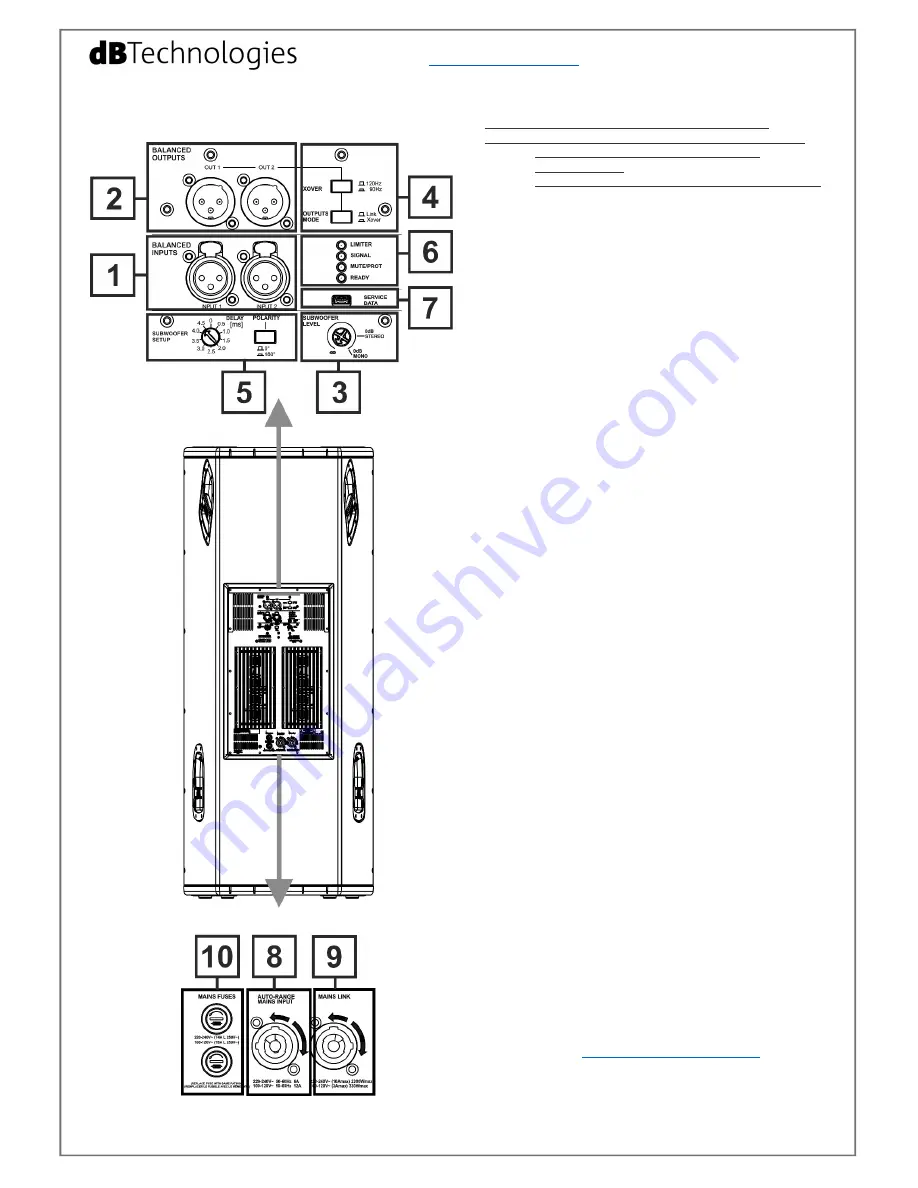
www.dbtechnologies.com
info@dbtechnologies-aeb.com
SIGMA S218
Rev 1.0 cod. 420120258Q
3) Connections and controls
WARNING
The fuses are factory set for 220-240 V operation.
If it is necessary to change the fuses to 100-120V range:
1.
Disconnect the speaker from any cable
2.
Wait 5 minutes
3.
Substitute the fuse with the correct ones supplied
The double DIGIPRO G3
®
amplifier of SIGMA S218 is
controlled by a powerful DSP. All the connections and
controls are in the rear amplifier control panel:
1
– Balanced XLR inputs
2
– Balanced XLR outputs
3
– Subwoofer level rotary encoder
4
– Xover switch (for the choice of frequency
Xover) and Outputs Mode (Link or Xover mode)
5
– Subwoofer Setup (Phase switch) and
rotary (Delay)
6
– LEDs (Limiter, Signal, Mute/Prot)
7
– Service data mini B-type USB port
8
– Auto range mains input connector
9
- Mains links connector
10
– Mains fuses
a) Once you have properly set up the desired
configuration (see also the SIGMA S218 complete user
manual and accessories instructions for further
information), connect the audio input (mono) or
inputs (stereo) (
1
). Connect the output (mono) or
outputs (stereo) (
2
) and consequently set the
Subwoofer level to 0 dB in the right position (
3
).
b) Set properly the Outputs Mode (
4
), (“Link” in case of
direct link connection, “Xover” in case the output is
filtered). If you have selected the “Xover” Mode with
the related switch, select the correct frequency with
the Xover switch (
4
).
c) Choose the Subwoofer Setup (Delay and Phase) (
5
)
to obtain the proper behavior.
d) Connect the power link (
9
) to potential other SIGMA
speakers, if needed. Then connect the power supply (
8
)
to the module. The “Mute/Prot” flashes briefly, the
“Ready” LED turns on, signaling the proper power
connection. The “Signal” LED (
3
) starts blinking at the
presence of audio signal (greater than -20 dBu).
Check the site
www.dbtechnologies.com
for further
information, for added accessories and for the
complete user manual!






















